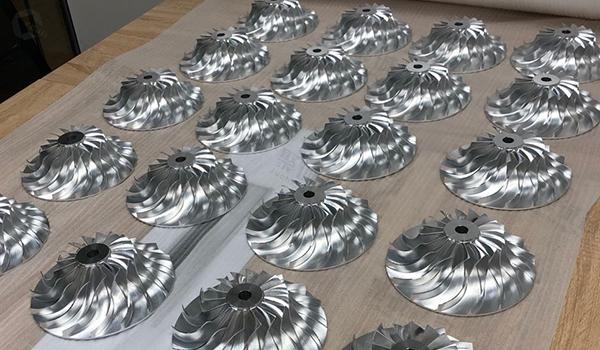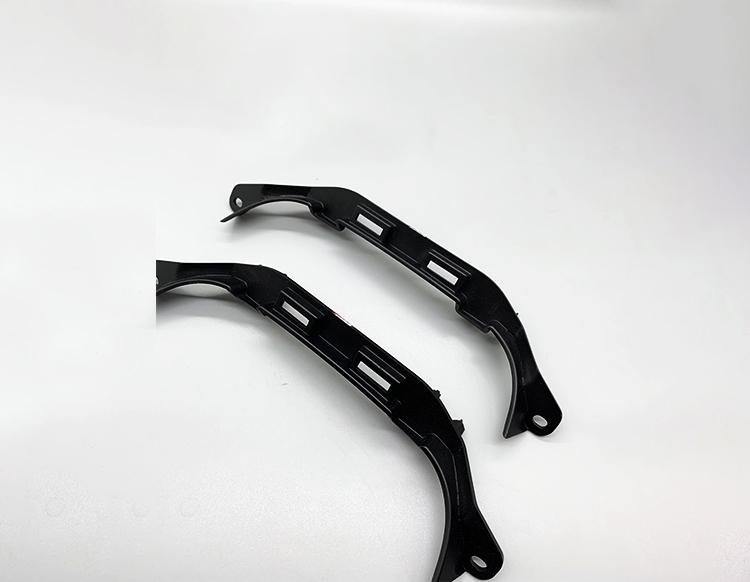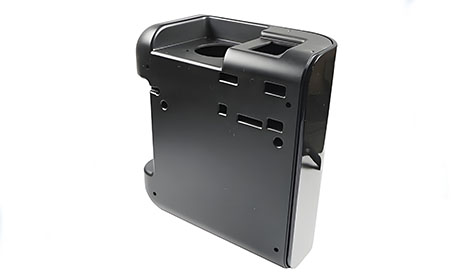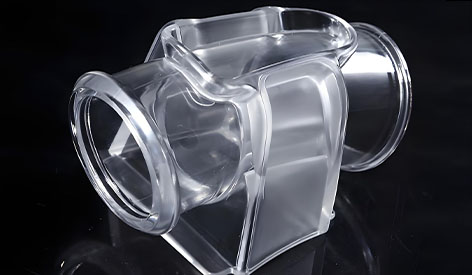On the track of industrial innovation, silicone lamination (vacuum injection molding) is like a low-key “industrial tailor” – it does not produce prototypes, but can use silicone molds for creative ideas to sew a touchable “coat The “coat” of creativity can be touched by silicone molds. When designers are hesitant to open molds, when engineers are anxious about small batch verification, silicone lamination technology is quietly reconstructing the path from lab to mass production.
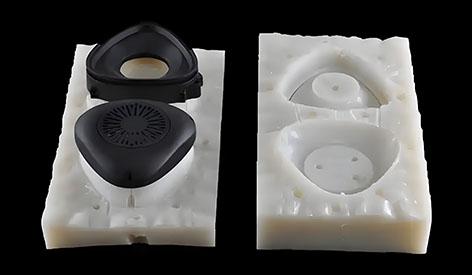
In-depth analysis of the core advantages of silicone lamination
1. High-temperature performance: 200 ℃ under the stability of the defender
The performance of silicone coating in a high-temperature environment is called the “firefighter” in the engineering materials industry:
Technical nature: silicone molecular chain of Si-O bonding energy as high as 452 kJ/mol, much higher than the C-C bond (347 kJ/mol), endowed with thermal stability9;
Industrial cases: German automotive parts maker Müller Tech used the film process to produce turbocharger piping, in the sustained 150 ℃ conditions to enhance the service life of three times, to avoid the risk of carbonization of the traditional coating off User value: the preferred validation solution for high-temperature scenarios such as electronic heat sinks and engine compartment parts.
2. UV Resistance: “Invisible Armor” for Outdoor Products
UV is the number one killer of material aging, and silicone compound film gives double solutions:
Chemical barrier: Phenyl-modified silica gel absorbs UV photons and converts them into heat, reducing photodegradation of the substrate;
Physical protection: After coating the panels of OutdoorGear’s mountaineering instruments, the life of outdoor weathering test was extended to 5 years, saying goodbye to yellowing and embrittlement.
3. Chemical corrosion resistance: acid rain and solvents “terminator”.
Medical disinfectant, automotive coolant, industrial acid mist – the defense matrix of silicone film covers three major battlefields:
Molecular-level defense: cross-linked silicon network forms a hydrophobic barrier to block polar solvents from penetrating7;
Industry evidence: endoscope handle laminates from Swiss medical company MediForm have passed FDA Class II certification with zero corrosion performance in glutaraldehyde immersion test.
4. Flexible Design: The “Cushion Master” of Drop Testing
Silicone laminates are rewriting the “rigidity dilemma” when 3D printed parts are brittle and CNC parts are chipping:
Energy Absorption Mechanism: TPU/Silicone compound film layer can absorb up to 85% of the impact energy;
Consumer Electronics Breakthrough: Korean consumer electronics brand SoundLabs’ TWS headphone shells, through the 0.8mm Silicone Compound Film to achieve 1.5 meters drop without damage, the after-sales repair rate dropped by 40%.
5. Environmental protection: EU RoHS “Green Pass”.
Sustainable innovation from material to process:
Non-toxic closed loop: food-grade platinum catalyst system, free of tin/amine toxic residues;
Recycling: silicone molds can be reused 15-20 times, 70% lower carbon footprint than aluminum molds.
Silicone lamination technology five pain points and industrial-grade solutions
1. Cost quagmire: small batch “king of price/performance ratio” vs. large batch “economic trap”.
The truth is revealed:
✅ 200 pieces or less: the cost of silicone molds is only 5%-10% of steel molds;
❌ More than 500 pieces: the cost advantage of steel molds per piece is reversed (see the table below for comparison);
| yield | Silicone lamination unit cost | Cost per piece for steel mold injection molding |
|---|---|---|
| 50 items | $80 | $1,200+ |
| 500 items | $150 | $90 |
Breakthrough strategy:
▶ U.S. prototyping service provider ProtoLabs launched a hybrid solution: 50 pieces of silicone lamination verification, design confirmation and then switch to mass production of steel molds.
2. Process rigor: 0.1mm precision “micro-manipulation battle”.
Vacuum injection is not “pouring glue”, but the art of nano-scale control:
Deadly details:
air bubbles > 0.3mm → automotive gearbox test piece fracture load decreased by 35%;
temperature fluctuation ± 5 ℃ → medical catheter lamination layer thickness deviation of up to 12%;
industrial-grade countermeasures:
▶ PreciseCast, a German precision manufacturer, introduces a dual-vacuum system: material defoaming before molding + cavity vacuum double guarantee;
▶ thermostatic chain control: temperature difference in the curing zone of 60-80 ℃ ≤ ± 1 ℃.
3. Substrate suitability: the “bonding code” between metal and engineering plastics.
Why is the compound film layer strong on aluminum alloy but peeling off on PP plastic? Chemical bonding is the key:
Bonding Enhancement:
| Substrate type | Processing | Magnitude of bonding enhancement |
|---|---|---|
| aluminum | micro-arc oxidation | 180% |
| ABS | plasma treatment | 250% |
| PP plastic | Fluorinated primer (Primer) | 400% |
Failure case warning:
▶ A UAV gimbal mount without substrate treatment → the whole laminate layer peeled off during vibration testing → the project was postponed for 6 weeks.
4. Physical Damage: The “Achilles Heel” of Flexible Surfaces
When sharp tools cut through the laminate, the solution lies in the design of the composite structure:
Paths of innovation:
Enhanced by nano-ceramic particles: 10% ZrO₂ added to silica gel to increase scratch hardness to 2H4;
Gradient structure: Japan-based manufacturer JSR has developed a surface-hardened layer + flexible transition layer lamination technology to increase impact resistance by 90%.
5. Long-term aging: five years after the “performance defense”
UV light is only the beginning, thermal and oxygen aging is the ultimate enemy:
Accelerated aging data:
Unmodified silica gel lamination: 85℃/85%RH environment for 1000 hours → tensile strength decay 42%;
Phenyl-modified silica gel: the same conditions → performance decay ≤ 8%;
Life extension program:
▶ Adding Hindered Amine Light Stabilizers (HALS) + Antioxidant AO-80 → Outdoor service life exceeds 8 years.
🚀 Industry breakthrough: the golden application scenario of silicone lamination
Automotive R&D: A Shortcut to Save Millions of Mould Costs
Classic cases:
E-Motion, a new German tram force, develops charging gun housings:
1️⃣ Silicone lamination 50-piece validation assembly → save €120,000 in molding costs; 2️⃣ Detecting the position of fusion bonding lines → optimizing the gate design of the mold;
3️⃣ User grip testing → adjusting the thickness of TPU coverings.6
Medical Devices: Jumping over the “Valley of Death” of Biocompatibility “
Breakthrough Logic:
▶ Medical grade LSR liquid silicone lamination → Passed ISO 10993 cytotoxicity test → Faster than open mold validation 6 weeks;
▶ U.S. cardiac stent company CardioTech: completing animal experiments with replica parts to accelerate FDA approval.
Consumer Electronics: “Flexible Production Lines” for Small Volume Customization
Trend insights:
▶ Limited edition headphones/gaming accessories → Silicone lamination within 200 sets → Single piece cost can be controlled within $15;
▶ Japanese hip brand AudioCraft: lamination process supports fans to customize the color scheme, with a premium of up to 300%.
🌍 Future Battlefield: Three Evolutionary Directions of Silicone Re-filming
Intelligent Process
▶ Israel’s NanoFlow introduces AI visual bubble detection: real-time adjustment of vacuum parameters, yield rate increased to 99.2%;
Eco-friendly Material Innovation
▶ Germany’s Wacker develops bio-based silicone: 55% lower carbon emissions, commercialized by 2025;
Ultra-life molds
▶ Ceramic-reinforced silicone molds: life expectancy exceeds 100 die cycles, challenging the field of low-pressure infusion.
